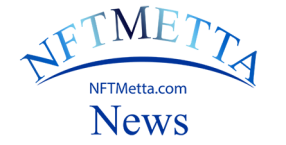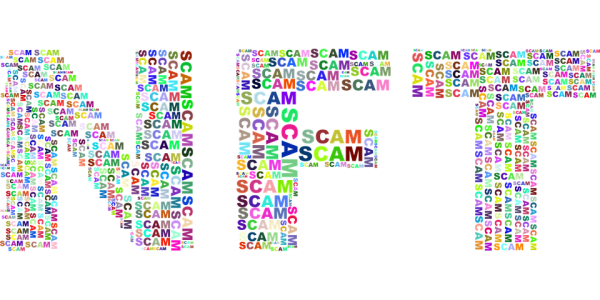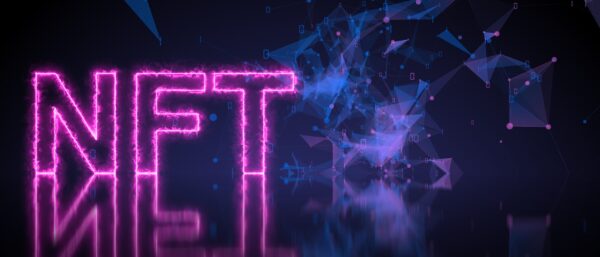October 14, 2022
By Murtuza Merchant
NFTs will soon be available on Instagram, Mark Zuckerberg said earlier this year.
What does that imply, exactly?
We don’t know for sure how Zuckerberg will add this newest development to his Frankenstein product structure because the statement was a word vomit of cliches.
The odds are against it because Meta is among the finest acquirers in history and one of the least inventive.
The half-life of NFTs is a more general and intriguing topic.
NFTs were booming as 2021 came to a finish, hot, all over, and worth $41 billion.
Spotify is hiring for NFTs, businesses like Louis Vuitton and Budweiser are generating them, and Twitter beat Zuckerberg to the NFT punch by allowing users to use an NFT as their profile image.
The McDonald’s McRib is even available as a virtual NFT.
However, there are indications the euphoria is waning. Scams and fraud are (still) increasing, trading is down, and Google searches are down.
Although the hype cycle may have reached its peak, NFTs (or equivalent technology) has the potential to significantly advance a key component of the digital economy.

What are NFT use cases?
It is comparable to the deed of a house, despite the technobabble. a digital document that names the sole legitimate owner of a digital good.
Real estate deeds are supported by a system of organizations run by professionals, legal norms, and paper and electronic records. Real estate is expensive, but it’s worthwhile. Non-fungible tokens, or NFTs, are acts that are performed in the digital rather than atomic world.
NFTS are economically viable for digital goods and lower-value property since they are digitally native and (theoretically) less expensive than real estate deeds. For anything, actions. NFTs may play a crucial role in our economy as private property and ownership, which are fundamental to capitalism, become more prevalent online.
Uniqueness and Authenticity
The Internet lacks the scarcity and authenticity that NFTs provide to digital trade. We all have an innate tendency toward a scarcity mentality. Because our instincts haven’t kept up with industrial food production, our appetites for sugar and fat—which have historically been scarce—have led to an obesity pandemic.
The benefits of authenticity are both pragmatic (we prefer to know where our food comes from and who we can sue if it gets us sick) and philosophical (does part of the money we spend on music go to the musician who created it?).
Digital trade is chaotic because there are few trustworthy choices for scarcity and authenticity. Music on plastic CDs was physically distributed, but Napster overcame the limitations of scarcity that came with it.
Piracy of digital products of all types lowers long-term innovation and tech profitability. Facebook added another nail to the coffin by downplaying the source, while Google put the news media under intense care by repeating its material (ending scarcity) (neutering authenticity).

The advent of blockchain
Because it cracked this code, bitcoin created a trillion-dollar asset class. Because it can only be produced by the U.S. Treasury (authenticity), a dollar note is worth $1, and we trust Uncle Sam to only print a certain amount of them (scarcity).
There will only ever be 21 million bitcoins generated, therefore Bitcoin’s “proof-of-work” method also protects exclusivity and legitimacy (all are tracked on an immutable public ledger).
For digital commodities, NFTs guarantee authenticity and scarcity. NFTs aren’t the only way to instill scarcity and authenticity online; reputable, centralized organizations like banks (as well as platforms like Twitter and Apple) also do it within their respective fields, and blockchain technology is developing to address a wide range of environmental and security issues.
Therefore, the way that NFTs are now implemented may not be the best or even a good manner (many reasons to be skeptical).
However, they are a potentially ubiquitous, affordable method of presenting verifiable scarcity and authenticity online, offering up new avenues for digital trade.
Art
When digital artist Beeple sold Everydays, an NFT mosaic of his everyday digital photos, for $69 million at Christie’s a year ago, the world outside of crypto-obsessives began to take notice of NFTs. Art is the asset type that is most reliant on authenticity and scarcity. Our idea that there is only one (scarce) Mona Lisa and the knowledge that it was made by Leonardo da Vinci gives it its worth (authentic).
Similar to how deeds support the real estate market, the fine art market is supported by a whole industry of galleries, museums, and advisors as well as by antiquated records and cutting-edge technology. The failures have taught us this: Pei-Shen Qian, a single successful forger who was born in Queens, destroyed a 170-year-old art gallery and inspired tens of lawsuits (as well as one Alec Baldwin podcast) with his body of fictitious Rothkos.
Digital forgery can be thwarted using NFTs. In addition to a less cryptic Opensea listing with intelligibility provided by centralization, Beeple’s Everydays is publicly validated on the blockchain. The more affordable the art, the more a scalable platform for ensuring scarcity and authenticity is needed.
Bored Ape
A collection of JPEGs featuring monkeys in various clothes called Bored Ape Yacht Club is no funnier or less funny than any other fad. There are 10,000 of them, each one different, and they are worth a total of $3 billion. One costs $311,000 as a base price. By acquiring the NFT brands CryptoPunks (bored guys) and Meebits (bored avatars) and financing $450 million at a $4 billion valuation, Yuga Labs, the company behind Les singes ennuyés, has solidified its position as the dominating power in NFT-based collectible bubbles.
Does this JPEG ape bubble exist? Likely. Bubble collectibles are nothing new. Cartoonish figurines that were created at a minimal cost and expertly marketed as Beanie Babies each had a unique personality. eBay generated $500 million in sales in a single month in 1997 or 6% of total yearly revenues.
The list includes tulips, animation cells, garbage pail kids, cabbage patch dolls, and more. Some persist, like antique baseball cards (outperforming the S&P 500 since 2008). For art and non-bubble collectibles with reasonable prices, there is a sizable market that might profit from digital authenticity and scarcity.
Additionally, NFTs provide the opportunity for artists to receive royalties each time their work is sold on the secondary market, addressing some of the injustices in the creative economy.
How long will Bored Apes be regarded as culturally significant? Not sure. As trees, they have lives and pass away. The forest, however, is eternal.

Brands
Genuineness and scarcity are the cornerstones of brands. Given their rarity and brand recognition, Chanel can charge $500 for sunglasses. In return, the client is granted the ability to say “I’m ambitious” without really expressing it.
But branding has more to do than only denote affluence. Levi’s and Wrangler say one thing, while Doc Marten boots say another. Oatly is not milk, but rather a declaration of who you are.
People undervalue brands; this is a fiction we tell ourselves. Branded beer has superior flavor over unbranded beer. Following brand-related commercials, allergy medications work better. We are a tribal species, and we categorize ourselves using logos.
Examples include Labradoodle vs. Labrador, Star Wars vs. Dragon Ball, iOS vs. Android, and NYU vs. Columbia. Despite the existence of imitations, we claim that certain logos are “genuine.”
NFTs support the network of intellectual property laws and organizations that guarantees a brand’s owners maintain control over scarcity in the digital economy.
In their own corporate, Zuckerbergian, socially stunted ways, many businesses are beginning to realize this. People want to follow Miller Lite on Instagram just as much as they want to visit the Miller Lite metaverse bar.
There’s no denying that a large portion of the completeness that businesses bring to real life is absent online.
Belongings
To demonstrate my prosperity and machismo, I put on a Panerai watch every morning. It’s been ten years since I owned it. I have something much harder to come by online: Twitter’s blue checkmark.
The blue check is like a digital Panerai (kind of): it’s authentic, and rare, and it indicates that if you mate with me, your offspring have a better chance of surviving than if you marry with someone who doesn’t have the blue check.
The mobility between mediums will be a crucial component of NFTs. However, the NFT counterpart of a Twitter blue check may exist on Instagram and give genuine authenticity because of that NFT action.
A Twitter blue check cannot exist on Instagram.
This is the metaverse concept of interoperability that might help make digital possessions seem like real possessions.
On the internet, there are certain sorts of digital property, but not many. You can buy clothing and weapons on Fortnite. You may earn badges on Reddit. The key message here is that although there is a lot of content online, not much of it is actually yours.
Now ask yourself: How much tangible property do you own? Think about everything you have in your home, including books, artwork, CDs, trophies, and pictures.
What is the whole market worth of that? We’ll need some kind of infrastructure that enables us to own it as our lives and our possessions go more online.
Money Transforms Everything
As a capitalist, I typically believe that healthy markets lead to better lives.
Digital marketplaces would benefit if genuine scarcity and authenticity were introduced, but the operative term is “net.” Scams and exploits have naturally followed the surge in interest in NFTs.
The high of the market, which roughly matched former First Lady Melania Trump’s NFT swindle, has lately begun to cool. (To provide misleading signals about the value, she purchased her own NFT using phony accounts.)
When I spoke with Dallas Mavericks owner Mark Cuban, he expressed worry that NFTs for sports teams may replace the emotional connection that fans have to their team and players with the anxiousness of a day trader sweating a position.
Genuineness and scarcity are strong forces—but not necessarily for the better.
We aren’t going to abandon the industrial food system and live off the land despite the obesity issue brought on by our innate need for limited sugar and fat.
Real value will be unlocked in digital markets by believable scarcity and authenticity in the midst of frauds and bubbles.
About the author
Murtuza Merchant is a senior journalist and an avid follower of blockchain and cryptocurrencies.




I don’t think the title of your article matches the content lol. Just kidding, mainly because I had some doubts after reading the article.